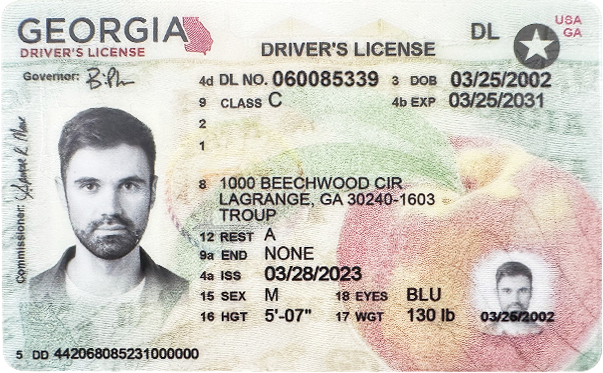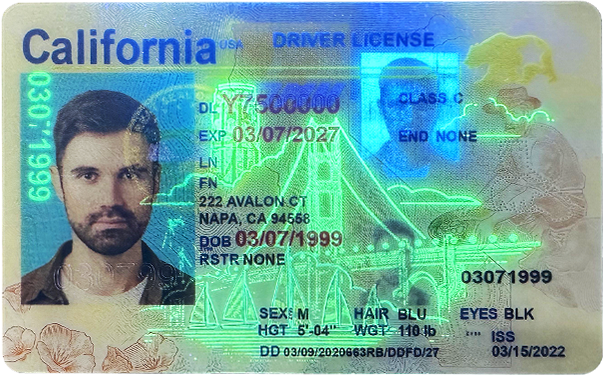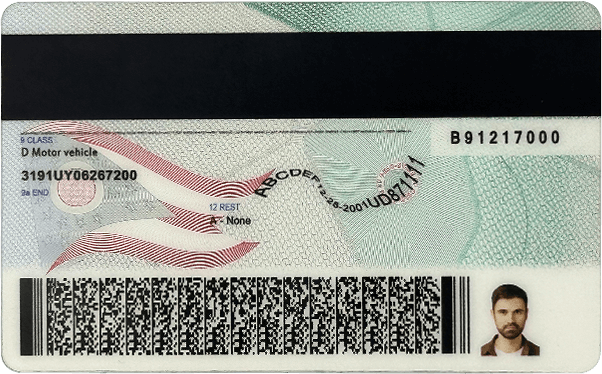Introduction
Driver’s licenses are essential forms of identification and authorization for operating motor – vehicles. However, the proliferation of fake driver’s licenses poses a significant threat to public safety, security, and the integrity of administrative systems. Technology has emerged as a powerful ally in the fight against this problem, providing sophisticated tools and methods to accurately detect counterfeit driver’s licenses.
Advanced Imaging Technologies
One of the key technological advancements in detecting fake driver’s licenses is the use of high – resolution imaging. High – end scanners and cameras can capture detailed images of driver’s licenses. These images can then be analyzed at a microscopic level. For example, genuine driver’s licenses often have unique micro – printing or fine – line details that are extremely difficult to replicate. By using high – resolution imaging, these minute details can be observed and compared with known genuine license templates.
Another aspect of imaging technology is the use of multi – spectral imaging. This technology can detect different wavelengths of light, such as ultraviolet (UV), infrared (IR), and visible light. Many driver’s licenses incorporate UV – reactive inks or IR – absorbing materials as security features. When a license is scanned using multi – spectral imaging, these hidden security features can be revealed. For instance, a genuine license may have a UV – reactive logo that glows under UV light, while a fake one may lack this characteristic.

Biometric Verification
Biometric technology has also made significant inroads in the detection of fake driver’s licenses. Fingerprint verification is one of the most common biometric methods. When a person applies for a driver’s license, their fingerprint is recorded. During the license verification process, the fingerprint of the license – holder can be quickly scanned and compared with the stored fingerprint data. If there is a mismatch, it could indicate that the license is fake or being used fraudulently.
Facial recognition technology is another powerful biometric tool. Modern driver’s licenses often have high – quality photographs of the license – holders. Facial recognition algorithms can analyze the unique features of a person’s face in the license photo and compare it with the face of the person presenting the license. Advanced facial recognition systems can even account for changes in appearance due to factors like aging, glasses, or facial hair to a certain extent. If the facial features do not match, it is a strong indication of a potential fake license.

Data Analytics and Database Integration
Data analytics plays a crucial role in detecting fake driver’s licenses. By analyzing large amounts of data related to driver’s license applications, issuances, and verifications, patterns and anomalies can be identified. For example, if a large number of licenses are being issued from a particular location in a short period with suspiciously similar characteristics, it could be a sign of fraudulent activity. Data analytics algorithms can flag such unusual patterns for further investigation.
Database integration is also vital. Driver’s license information is often stored in large databases. These databases can be integrated with other relevant databases, such as criminal records databases or identity verification databases. When a driver’s license is presented for verification, the system can cross – reference the license information with other databases. If the license – holder has a criminal record for identity theft or fraud, or if their identity information does not match across different databases, it can raise a red flag regarding the authenticity of the driver’s license.

RFID and Smart Card Technologies
Radio – Frequency Identification (RFID) technology is being increasingly used in driver’s licenses. RFID tags can be embedded in the license, which contain encrypted information about the license – holder. When the license is scanned using an RFID reader, the information can be quickly retrieved and verified. This technology provides an additional layer of security as the RFID tags are difficult to counterfeit and can be programmed with unique identifiers.
Smart card technology is another form of advanced identification. Smart cards used for driver’s licenses have integrated circuits that can store a large amount of data, including biometric information, license details, and security – related data. These cards require specific authentication methods to access the data, making it extremely difficult for fraudsters to create fake smart card – based driver’s licenses.
Common Problems and Solutions
- Problem: False Positives in Biometric Verification
Sometimes, biometric verification systems may produce false positives, where a genuine license – holder is incorrectly flagged as using a fake license. This can be due to factors such as changes in fingerprint quality (e.g., due to injuries or skin conditions) or variations in facial appearance (e.g., due to heavy makeup or different lighting conditions).
Solution: Implement more advanced biometric algorithms that can adapt to such variations. For example, in fingerprint verification, algorithms can be designed to account for minor changes in fingerprint patterns. In facial recognition, systems can be trained to recognize a wider range of facial appearances under different conditions. Additionally, providing secondary verification methods, such as asking for a password or PIN associated with the license, can help reduce the impact of false positives. - Problem: Compatibility Issues with Imaging Technologies
Different types of driver’s licenses may have varying formats, materials, and security features. Imaging technologies may face compatibility issues when trying to scan and analyze licenses from different regions or countries. For example, some licenses may be made of materials that do not reflect light well, making it difficult to capture clear images.
Solution: Develop more versatile imaging devices that can adjust their settings based on the characteristics of the license being scanned. Manufacturers can also work with licensing authorities to standardize certain aspects of license design and materials to ensure better compatibility with imaging technologies. Additionally, software can be developed to enhance the quality of scanned images, compensating for any deficiencies in the initial scan. - Problem: Database Inconsistencies
When integrating multiple databases for driver’s license verification, there may be inconsistencies in data formats, update frequencies, and data accuracy. For example, one database may use a different naming convention for individuals compared to another, leading to difficulties in cross – referencing.
Solution: Establish standard data formats and protocols for all databases involved in driver’s license verification. Regularly update and synchronize the databases to ensure that the information is accurate and up – to – date. Implement data cleansing and validation processes to remove or correct any inaccurate or inconsistent data. Additionally, develop advanced data matching algorithms that can handle minor variations in data representation. - Problem: RFID and Smart Card Interference
RFID and smart card technologies can be affected by interference from other electronic devices or environmental factors. For example, strong electromagnetic fields can disrupt the functioning of RFID tags or smart cards, making it difficult to read the stored information.
Solution: Design RFID and smart card systems with better electromagnetic shielding to reduce the impact of interference. Develop error – correction and recovery mechanisms in the software used to read and process the data from these devices. Additionally, educate users on how to properly handle and store their driver’s licenses to minimize the risk of damage or interference to the embedded technologies. - Problem: Cost of Implementing Technology
Implementing advanced technologies for detecting fake driver’s licenses can be expensive. This includes the cost of purchasing and maintaining imaging devices, biometric scanners, RFID readers, and database integration systems. Smaller licensing authorities or countries with limited budgets may find it difficult to afford these technologies.
Solution: Explore cost – sharing models between different levels of government or public – private partnerships. For example, technology companies can partner with licensing authorities to provide technology solutions at a reduced cost in exchange for certain benefits, such as data access for research and development. Additionally, look for more cost – effective alternatives without sacrificing too much on security. For instance, open – source software solutions can be used for data analytics and some aspects of license verification, reducing the software licensing costs.
Fake ID Pricing
unit price: $109
| Order Quantity | Price Per Card |
|---|---|
| 2-3 | $89 |
| 4-9 | $69 |
| 10+ | $66 |



